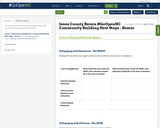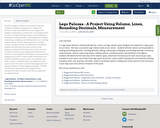
Districts and schools will use this template to plan their next steps for engaging with #GoOpenNC
- Subject:
- Applied Science
- Information and Technology
- Material Type:
- Teaching/Learning Strategy
- Date Added:
- 05/09/2019

Districts and schools will use this template to plan their next steps for engaging with #GoOpenNC

Districts and schools will use this template to plan their next steps for engaging with #GoOpenNC

Districts and schools will use this template to plan their next steps for engaging with #GoOpenNC

Districts and schools will use this template to plan their next steps for engaging with #GoOpenNC

Purpose: Engages students and introduces elements needed for building a playground.
In “Playground Palooza”, students will take the role of a playground designer responding to a request for a new playground at the school. Students will learn about numerical patterns, reading and writing decimals, rounding decimals, adding, subtracting, multiplying, and dividing decimals, converting measurements, volume, measuring volume, relating volume, coordinate planes, and attributes of 2D figures. Students will determine the total area of the new playground, determine the total area for each structure you want included on your playground, determine the volume of sand needed for the sandbox, use at least three playground structures, create a table of equipment and materials including company name, cost, quantity, and totals, create a coordinate system to display the center point for each structures or area on the playground, and submit a blueprint of their playground design.
***NOTE
This PBL was created before NC adopted the NC standards for Math. Therefore this PBL also addresses: rounding decimals.

This task is from Tools 4 NC Teachers. Students explore George's strategy and need to determine how to help him. This is remixable.

This is a great lesson plan to use to keep you on track. It includes what your principals/evaluators are looking for during observations, and even gives a section for you to reflect on your lesson. It can also be utilized by subs if written correctly.

This is a great lesson plan to use to keep you on track. It includes what your principals/elevators are looking for during observations, and even gives a section for you to reflect on your lesson. It can also be utilized by subs if written correctly.
This would also be a good tool to use with a substitute. It would be easy enough for a substitute to follow and give feedback on how the students completed the day.
Added through Remixing: A reflection piece was added for a teacher to examine how culturally relevant teaching principles are included in the lesson plan template. Also an indication of the grade level was added as well.

This is a great lesson plan to use to keep you on track. It includes what your principals/evaluators are looking for during observations, and even gives a section for you to reflect on your lesson. It can also be utilized by subs if written correctly.

This is a great lesson plan to use to keep you on track. It includes what your principals/elevators are looking for during observations, and even gives a section for you to reflect on your lesson. It can also be utilized by subs if written correctly.
This would also be a good tool to use with a substitute. It would be easy enough for a substitute to follow and give feedback on how the students completed the day.

This is a great lesson plan to use to keep you on track. It includes what your principals/evaluators are looking for during observations, and even gives a section for you to reflect on your lesson. It can also be utilized by subs if written correctly.

This is a great lesson plan to use to keep you on track. It includes what your principals/evaluators are looking for during observations, and even gives a section for you to reflect on your lesson. It can also be utilized by subs if written correctly.

Students will compare life cycles of several species. Students will use Google Slides (or PowerPoint) to create a life cycle diagram.

This remix is specific to Lincoln Charter School.

Literature circles are a way to engage students in reading by selecting texts to read and discuss with peers. Instead of traditional literature circle roles, use question stems as a way to spark discussion. These question stems build in the complexity of thinking required. Reflection questions are included for debriefing after the small group discussion.

Literature circles are a way to engage students in reading by selecting texts to read and discuss with peers. Instead of traditional literature circle roles, use question stems as a way to spark discussion. These question stems build in the complexity of thinking required. Reflection questions are included for debriefing after the small group discussion.

Literature circles are a way to engage students in reading by selecting texts to read and discuss with peers. Instead of traditional literature circle roles, use question stems as a way to spark discussion. These question stems build in the complexity of thinking required. Reflection questions are included for debriefing after the small group discussion.

Literature circles are a way to engage students in reading by selecting texts to read and discuss with peers. Instead of traditional literature circle roles, use question stems as a way to spark discussion. These question stems build in the complexity of thinking required. Reflection questions are included for debriefing after the small group discussion and students will use flipgrid.com to complete their reflections.

This resource supports educators and organizations in submitting their resources to the #GoOpenNC platform.

Need to work on PD for using and remixing.